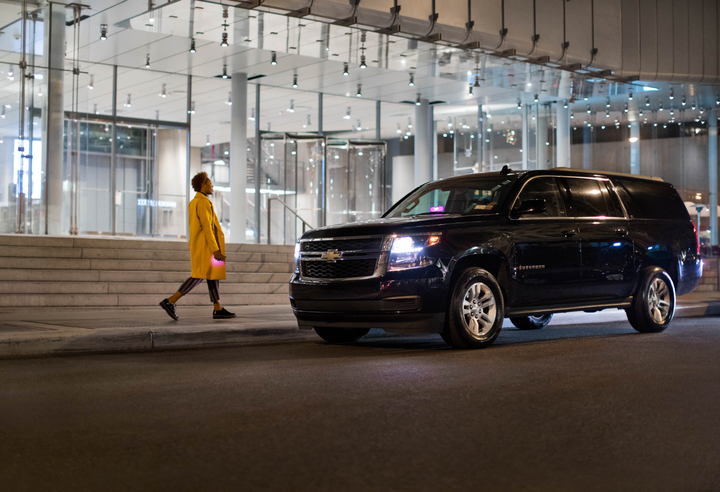Consumer Reports could not determine if any customers have been injured due to safety defects. Photo via Lyft. A recent study by Consumer Reports found that one in six vehicles on the Uber and Lyft platforms have an open recall for an unaddressed safety issue. Consumer Reports based its findings on data collected from 94,000… Continue reading 1 in 6 Uber, Lyft Vehicles Have Current Safety Recall, Study Finds
Tag: Uber
Car rental rates will fall by 2.5% in Spain over the next 12 months
Posted 05/22/2019 1:56:43 PM MADRID, May 22 (EUROPA PRESS) – Car rental rates could fall by 2.5% in Spain due to strong market competition and excess capacity, according to a study by American Express Global Business Travel (GBT). At an international level, the data is more positive. The study predicts that tariffs will increase slightly… Continue reading Car rental rates will fall by 2.5% in Spain over the next 12 months
A sixth of ridesharing cars have unfixed safety recalls
Sponsored Links REUTERS/Lucy Nicholson It’s not just ridesharing drivers that merit some safety concerns — the car might be a risk as well. Consumer Reports has conducted a study indicating that 16.2 percent of the nearly 94,000 ride hailing cars it identified in New York City and King County (including Uber, Lyft and smaller outfits… Continue reading A sixth of ridesharing cars have unfixed safety recalls
Lyft adds more safety features including in-app emergency assistance, reminders to check the plate
Earlier this spring, both Uber and Lyft introduced new safety features and policies following the death of a university student who was kidnapped and murdered after getting into a vehicle she believed to be her Uber ride. Today, Lyft is announcing an expanded set of safety features and programs, including those that help riders find… Continue reading Lyft adds more safety features including in-app emergency assistance, reminders to check the plate
Self-driving trucks begin mail delivery test for U.S. Postal Service
(Reuters) – The U.S. Postal Service on Tuesday started a two-week test transporting mail across three Southwestern states using self-driving trucks, a step forward in the effort to commercialize autonomous vehicle technology for hauling freight. The TuSimple self-driving truck is pictured in this undated handout photo obtained by Reuters May 20, 2019. TuSimple/Handout via REUTERS… Continue reading Self-driving trucks begin mail delivery test for U.S. Postal Service
GM’s car-sharing service Maven to exit eight cities
GM is scaling back its Maven car-sharing company and will stop service in nearly half of the 17 North American cities in which it operates. A spokesperson who confirmed Maven was shutting down in some cities, without identifying the locations or number that will remain, said the company plans to focus on markets that have… Continue reading GM’s car-sharing service Maven to exit eight cities
GM’s car-sharing service is pulling out of eight cities, including Chicago and NYC
Maven, the car-sharing service owned by General Motors, is ending operations in several major North American cities. According to The Wall Street Journal, the mobility brand will wind down service in eight of the 17 cities in which it operates, including Boston, Chicago, and New York City. Maven will continue to operate in Detroit, Los… Continue reading GM’s car-sharing service is pulling out of eight cities, including Chicago and NYC
In-car commerce startup Cargo extends Uber partnership to Brazil
Cargo, the startup that brings the convenience store into ride-hailing vehicles, is making its first international expansion through an exclusive partnership with Uber in Brazil. Uber drivers in São Paulo and Rio de Janeiro will now be able to sign up for Cargo and potentially earn additional income by selling products to passengers during their… Continue reading In-car commerce startup Cargo extends Uber partnership to Brazil
China’s Didi shuns Mexico’s ride-hailing tax plan
MEXICO CITY, May 20 (Reuters) – Chinese ride-hailing platform Didi said on Monday it would not take part for now in a new Mexican scheme to retain tax from drivers and delivery riders at technology companies, after rival firms Uber and Cabify signed up to the program. In a statement, Didi said it will continue… Continue reading China’s Didi shuns Mexico’s ride-hailing tax plan
Food delivery startup DoorDash said to be raising $500m fresh funding
Food delivery juggernaut DoorDash Inc. is raising at least $500 million from investors in a funding round that will likely value the company at about $13 billion, people familiar with the matter told Bloomberg. The final size of the funding round is still being determined, and could easily exceed $500 million, said the people, who… Continue reading Food delivery startup DoorDash said to be raising $500m fresh funding

